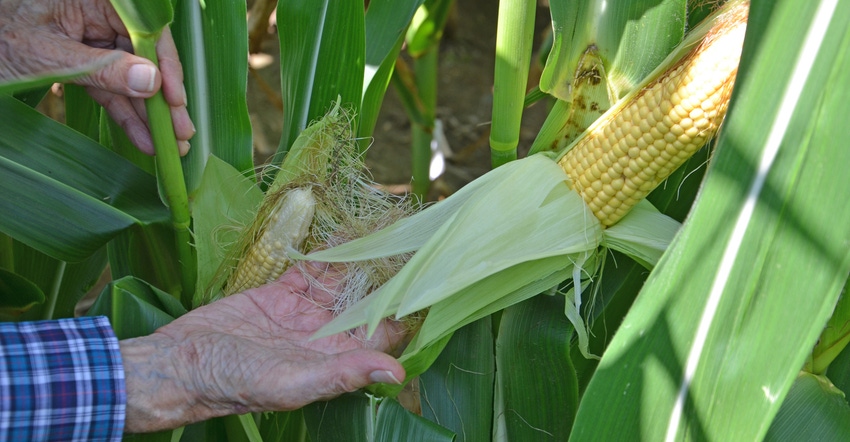
Dave Nanda has a sharp eye for late-emerging plants when he walks cornfields late in the season and just before harvest. “They are usually shorter, and stalks are smaller around,” he says. “Often, the ear is smaller, and if it has grain, there may be missing kernels. Sometimes, there is no ear at all.”
The longtime plant breeder and director of genetics for Seed Genetics Direct is no fan of late-emerging plants. However, he notes that it’s important to define what’s meant by a “late emerger.”
“If you’re only talking two to three days later in emergence, some of those will catch up,” Nanda explains. “We’ve seen that in plots which we’ve flagged during the past two seasons. The ears may be smaller, but not that much smaller. Sometimes, spacing between plants within a row can affect ear size as much as or more than late emergence in these situations.
“Also, if several plants within the row emerge late, especially consecutively, there may be less effect because each one is about the same size as its neighbor. It’s not ideal, and all of them may produce smaller ears than if they emerged on time. We saw that in the Corn Watch ’21 field, where emergence stretched out over two weeks due to very cool, very wet soils.”
This year
What’s more typical this year is a single plant or, at most, two together that emerged a few days later than neighbors. While planting was delayed until May 11 in the Corn Watch ’22 field, both the soils and weather were warm when corn could finally be planted.
“We saw almost record quick emergence, with most plants emerging together one week after planting,” Nanda recalls. “But there were still a few stragglers, and those showed up late in the season.”
Nanda examined several of those he found while walking fields before harvest. “Some ears had more grain than I expected, but compared to normal neighbors next door, the ear was typically about half the size.
“Pollination also wasn’t as effective. I was tipped off before I ever pulled shucks back to check an ear. Typically, there were some whitish, unfertilized silks still on the ear. If a late-emerging plant silks late, there is less pollen left by the time silks are ready to receive it. Since tip ovules pollinate last, they’re the ones most likely to be left unfertilized. Without fertilization, kernels don’t develop.”
If you find late emergers, the challenge is figuring out what caused the delay, Nanda says. That’s often easier to do earlier in the season, especially if it’s tied to a planter issue. However, it’s important to spend time evaluating possible causes, he says. Finding too many late emergers can put a drag on overall average yield within a field.
About the Author(s)
You May Also Like




